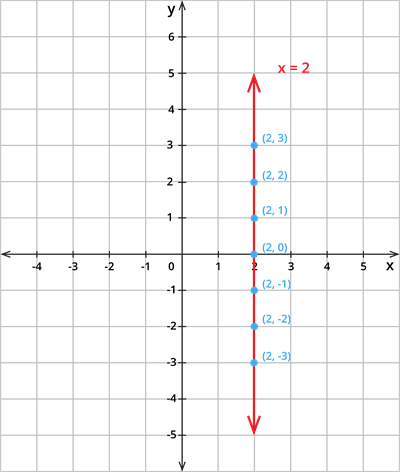
PUMPA - SMART LEARNING
எங்கள் ஆசிரியர்களுடன் 1-ஆன்-1 ஆலோசனை நேரத்தைப் பெறுங்கள். டாப்பர் ஆவதற்கு நாங்கள் பயிற்சி அளிப்போம்
Book Free DemoConsider drawing a line parallel to \(y\) - axis, which is at a distance of \(b\) units. Then, the \(x\) coordinate of every point on the straight line will be "\(b\)".
Hence, the general equation of the line parallel to \(y\) - axis is \(x = b\).
Example:
Consider plotting the points \((2,-3,)\), \((2,-2)\), \((2,-1)\), \((2,0,)\), \((2,1)\), \((2,2)\), \((2,3)\).

Now, draw a line joining these points. The line is at a distance of \(2\) units from the \(y\) - axis. Here, \(b = 2\).
Therefore, the equation of the line parallel to \(y\) - axis is \(y = 2\).
Important!
1. If \(b > 0\), then the line \(x = b\) lies on the right side of the \(y\) - axis.
2. If \(b < 0\), then the line \(x = b\) lies on the left side of the \(y\) - axis.
3. If \(b = 0\), then the line \(x = b\) lies on the \(y\) - axis.